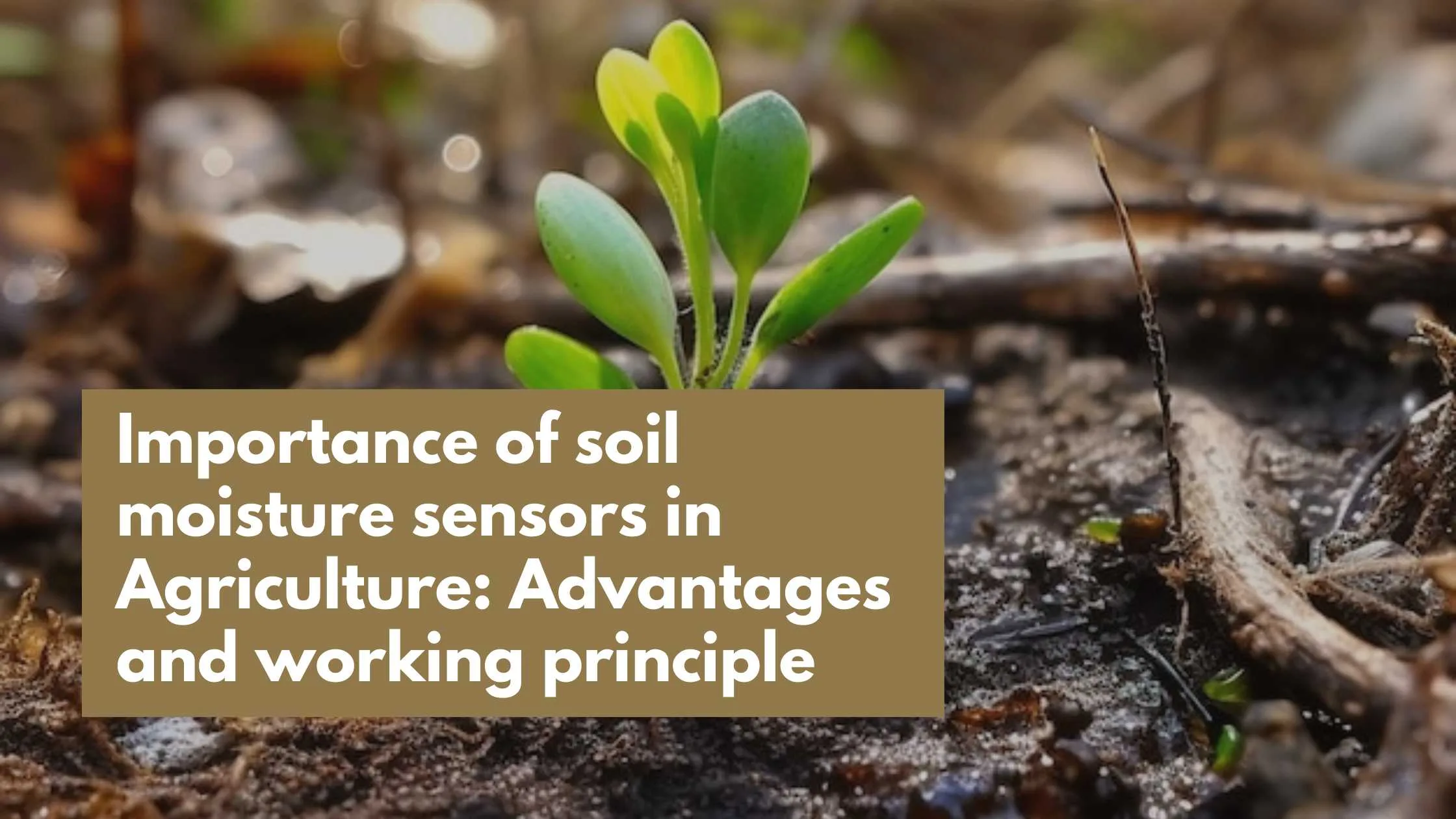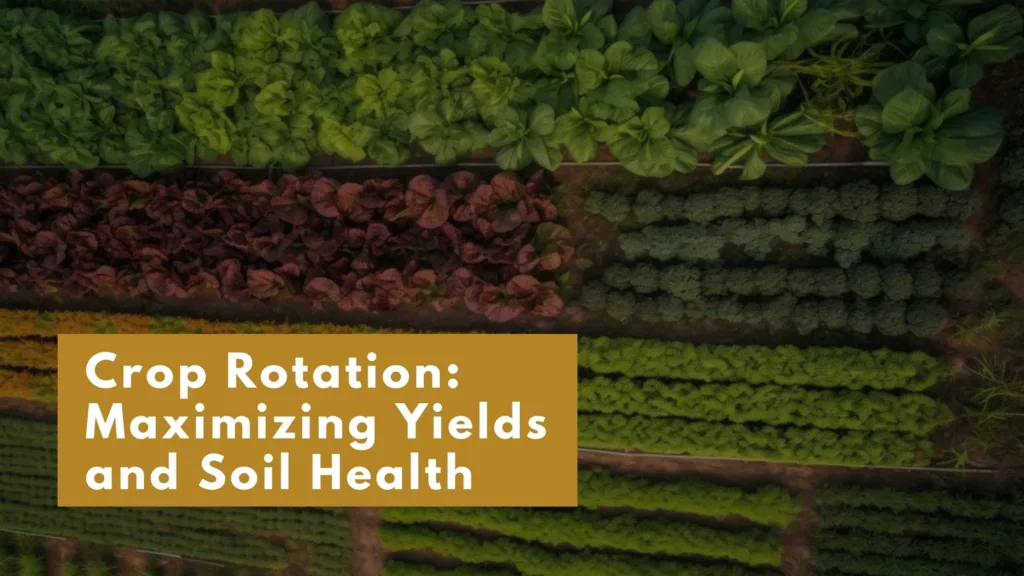What are soil moisture sensors?
Soil moisture sensors are electronic devices that are used to measure the amount of water in the soil. They measure the electrical resistance or capacitance of the soil, which changes as the amount of water in the soil changes. This information can be used to determine the moisture content of the soil, which is important for agriculture and horticulture. Moreover, there are other applications where the amount of water in the soil is critical to plant growth or other processes. Soil moisture sensors can be either contact or non-contact sensors. And they can be used in a variety of settings, from small gardens to large-scale agricultural operations.
What is the scope of soil moisture sensors in agriculture?
Soil moisture sensors play a crucial role in modern agriculture by providing accurate and timely information about soil moisture levels. It is essential for optimizing crop growth and maximizing yields. Some of the ways in which soil moisture sensors are used in agriculture include:
-
Irrigation management:
Soil moisture sensors can be used to determine when crops need water and how much water they need. This allows for precise irrigation management that can save water and improve crop yields.
-
Nutrient management:
These sensors can also be used to measure the availability of nutrients in the soil. That helps farmers optimize their fertilizer applications and reduce waste.
-
Disease prevention:
Soil moisture sensors can help farmers prevent crop diseases by maintaining the optimal soil moisture levels for their crops. This can reduce the risk of fungal and bacterial infections.
-
Climate adaptation:
Soil moisture sensors can be used to track changes in soil moisture levels over time. This can help farmers adapt to changing weather patterns and climate conditions.
Thus, the use of soil moisture sensors in agriculture can help farmers by optimizing water and nutrient management practices.
Advantages of soil moisture sensors
There are several advantages to using soil moisture sensors in various applications, including:
-
Improved water management:
Soil moisture sensors can provide accurate and real-time information about soil moisture levels. This can help optimize water use and reduce waste in irrigation systems. This can lead to significant water savings and lower water bills.
-
Increased crop yields:
Soil moisture sensors help farmers optimize their irrigation and fertilization practices by providing precise information about soil moisture levels. It results in increased crop yields and higher-quality crops.
-
Reduced disease risk:
Maintaining optimal soil moisture levels can help to prevent the growth of fungal and bacterial pathogens that can damage crops. Soil moisture sensors can help farmers identify when soil moisture levels are too high or too low. And allows them to adjust irrigation practices accordingly.
-
Improved sustainability:
Using soil moisture sensors can help farmers optimize their water and nutrient management practices. And also reduce waste and promote sustainable agriculture practices.
-
Cost-effective:
Soil moisture sensors can be a cost-effective way to improve crop yields and water management. Especially when compared to traditional methods like manual soil sampling and laboratory analysis.
Thus, soil moisture sensors provide a range of benefits that help farmers improve their operations and promote sustainable agriculture practices.
Why are soil moisture sensors important in agriculture?
Soil moisture sensors are important in agriculture because they provide critical information about soil moisture levels. The information is essential for optimizing crop growth and maximizing yields. Some of the key reasons why soil moisture sensors are important in agriculture include:
-
Water management:
Soil moisture sensors can provide accurate and real-time information about soil moisture levels. This helps farmers optimize their irrigation practices and reduce water waste. Moreover, it can lead to significant water savings and lower water bills.
-
Nutrient management:
Soil moisture sensors can also be used to measure the availability of nutrients in the soil. It also helps farmers optimize their fertilizer applications and reduce waste.
-
Disease prevention:
Maintaining optimal soil moisture levels can help to prevent the growth of fungal and bacterial pathogens that can damage crops. Soil moisture sensors help farmers identify when soil moisture levels are too high or too low, allowing them to adjust irrigation practices accordingly.
-
Climate adaptation:
Soil moisture sensors can be used to track changes in soil moisture levels over time, which can help farmers adapt to changing weather patterns and climate conditions.
Different types of soil moisture sensors
There are several types of soil moisture sensors available, each with its own advantages and limitations. Some of the most common types of soil moisture sensors include the following:
-
Tensiometers:
Tensiometers are simple and inexpensive devices that measure soil water tension or suction. They have a porous cup connected to a vacuum gauge. It measures the pressure required to extract water from the soil. Tensiometers are often used in conjunction with other sensors to provide a more complete picture of soil and water conditions.
-
Capacitance sensors:
They measure the dielectric constant of the soil, which relates to the soil moisture content. These sensors work by measuring the capacitance between two electrodes inserted into the soil. These sensors are relatively inexpensive and easy to use, but they can sometimes affect soil salinity and temperature.
-
Time-domain reflectometry (TDR) sensors:
TDR sensors use electromagnetic waves to measure the dielectric constant of the soil, which relates to the soil moisture content. These sensors work by sending a pulse of energy down a probe inserted into the soil. That measures the time it takes for the energy to reflect. TDR sensors are accurate and are used in a wide range of soil types. But they can be expensive and require specialized equipment.
-
Electrical resistance sensors:
These sensors measure the electrical resistance of the soil, which changes as the soil moisture content changes. These sensors work by sending a small electrical current through two electrodes inserted into the soil. It measures the resistance between them. Electrical resistance sensors are relatively inexpensive and easy to use, but they can be affected by soil temperature and salinity.
So, the choice of soil moisture sensor depends on the specific application and the characteristics of the soil.
How do soil moisture sensors work?
Soil moisture sensors work by measuring the amount of water present in the soil. There are several different types of soil moisture sensors that generally operate on one of three principles: capacitance, resistance, or time-domain reflectometry.
Capacitance sensors work by measuring the dielectric constant of the soil, which relates to the soil moisture content. These sensors consist of two electrodes that are inserted into the soil, and they work by measuring the capacitance between them. As the soil moisture content increases, the dielectric constant of the soil also increases. Then this leads to a change in capacitance that can be measured by the sensor.
Resistance sensors work by measuring the electrical resistance of the soil, which changes as the soil moisture content changes. These sensors consist of two electrodes that are inserted into the soil. And they work by sending a small electrical current between them and measuring the resistance between them. As the soil moisture content increases, the electrical conductivity of the soil also increases. This leads to a decrease in resistance that can be measured by the sensor.
TDR sensors work by sending a pulse of energy down a probe inserted into the soil. That measures the time it takes for the energy to reflect. The dielectric constant of the soil relates to the speed at which energy travels through it. So, by measuring the time it takes for the energy to reflect, the soil moisture content can be calculated.
Regardless of the type of sensor used, the information gathered by soil moisture sensors can be used to optimize irrigation and fertilization practices, prevent crop diseases, and promote sustainable agriculture practices.
Conclusion
In conclusion, soil moisture sensors are an important tool in modern agriculture, allowing farmers to optimize irrigation and fertilization practices. Also, prevent crop diseases and promote sustainable agriculture practices.
There are several different types of soil moisture sensors available, each with its own advantages and limitations. But they all work by measuring the amount of water present in the moisture sensors using capacitance and resistance principles. Moreover, with accurate and real-time information about soil moisture levels, farmers can make more informed decisions about their farming practices. It leads to more efficient and effective crop production.




Wow, ‘Importance of soil moisture sensors in Agriculture’ was a great read! I had no idea how crucial these sensors are for optimizing crop growth. Exciting to see technology shaping the future of farming!
I’m thrilled you enjoyed the post! Soil moisture sensors truly are game-changers for crop optimization. It’s exciting to witness how technology like this is revolutionizing the agricultural landscape. Thanks for your enthusiasm!
What an informative post! It’s fascinating how these sensors can revolutionize farming practices. Can’t wait to learn more about their advantages!
I’m glad you found the post informative! Soil moisture sensors indeed hold incredible potential for transforming farming. Stay tuned for more insights into their advantages. Thanks for your enthusiasm!